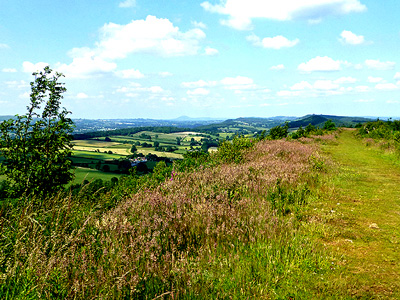
By ANDREW POWELL
Published: January 9, 2014
MUNICH — Sullen, virile, often disembodied voices speak bluntly in Vaughan Williams’s On Wenlock Edge (1909). They are lost and living British Empire soldiers. Their plights, in six Housman texts, shape the 22-minute song cycle and its mildly chromatic “atmospheric effects,” resulting in music of stimulating directness — and French touches: counsel from Ravel pushed VW past expressive block in setting the words and precedent of Fauré helped determine the choice of tenor and piano quintet scoring.
This inimitable work is, inevitably, awkward to program, but musicians of the Munich Philharmonic found a way Dec. 15 on one of their nine intrepid Kammerkonzerte this season in the red and gold finery of the Künstlerhaus here on Lenbachplatz, drafting pianist Paul Rivinius and tenor Mark Padmore (who recorded On Wenlock Edge in 2007 and again this year). Songs by Britten and Ravel and the French composer’s F-Major String Quartet (1903) offered context.
The long Shropshire cliff of Vaughan Williams’s title is swept with a storm in the first song, as the speaker imagines himself in the steps of a Roman warrior. Padmore (52) hurled his lyric tenor into the maelstrom of sound here, buffeted but not trounced by the accompaniment. For Is My Team Ploughing? he deployed sweet head tones and dark shadings to sketch two soldier friends, one of them dead, conversing about shared work and a shared girl. The seven-stanza fifth song, Bredon Hill, provides backbone for the cycle, lamenting a fiancée’s death against the illusory background of Worcestershire church bells. Padmore traced its lines with somber resignation.
Julian Shevlin, Simon Fordham, Julia Rebekka Adler and Sissy Schmidhuber mustered tight ensemble in the Ravel quartet. Like dedicated chamber musicians, they had evidently established a mutual view of the score and were able to realize its tricky harmonies and shifting tone colors while throwing measured amounts of light on its textures. The wandering and somewhat Debussian third movement, Très lent, had more shape than is usual, without loss of refinement, and the concluding Vif et agité came across as marked. (One of the orchestra’s three concertmasters, Shevlin gave an eloquent account of Walton’s Violin Concerto nineteen months ago when Ivor Bolton conducted.)
Each half of the concert opened with a song cycle: Britten’s ample Winter Words (1953) and Ravel’s Cinq mélodies populaires grecques (1906). Though not quite warmed up for the Britten, Padmore made wily use of top notes and his gift for floating a phrase, lighting the words with imagination. His timbre in this music turned coarse when pressured, however, and he applied pressure often. The mélodies found him just as effective in French. Rivinius played with lively confidence, an equal partner.
This annual Sunday matinée concert series began in 2007 during Christian Thielemann’s tenure as Generalmusikdirektor. Initially held at the Jewish Museum, the events were relocated for better acoustics four seasons ago. The musicians themselves choose the programs, eyeing adventure: Rezsö Kókai’s Quartettino and Franz Krommer’s B-flat Bassoon Quartet, for instance, feature at a concert next month. Silvia Hauer and Anja Harteros, at other Munich Philharmonic Kammerkonzerte this season, will sing music for voice and ensemble: Hindemith’s Unheimliche Aufforderung, Fauré’s cycle La bonne chanson and Chausson’s Chanson perpétuelle — the last two scored, like On Wenlock Edge, for piano quintet accompaniment.
Photo © Paul Hodgkinson
Related posts:
Jansons Turns 75
Bumps and Bychkov at MPhil
Nazi Document Center Opens
Bretz’s Dutchman, Alas Miked
Trifonov’s Rach 3 Cocktail
Tags: Britten, Cinq mélodies populaires grecques, Ivor Bolton, Jewish Museum, Julia Rebekka Adler, Julian Shevlin, Künstlerhaus, Lenbachplatz, Mark Padmore, München, Münchner Philharmoniker, Munich, Munich Philharmonic, On Wenlock Edge, Paul Rivinius, Ravel, Review, Simon Fordham, Sissy Schmidhuber, Vaughan Williams, Walton, Winter Words